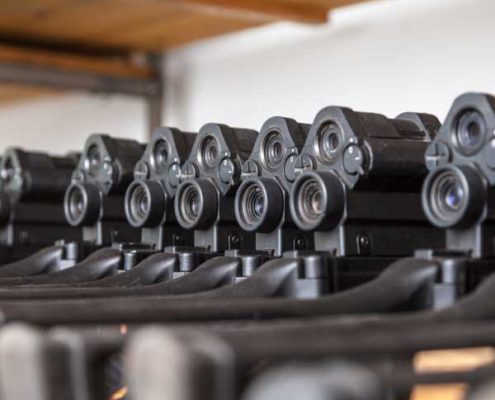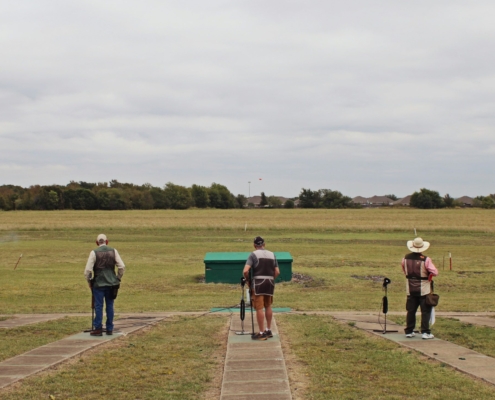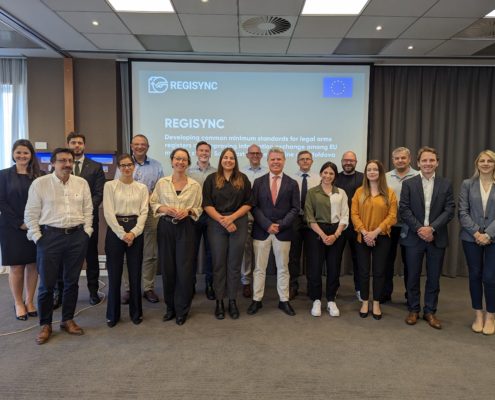 https://arquebus.uk/wp-content/uploads/2022/06/ARQ001-services_salw_thumbnail-v01.jpg
600
600
Callum Lloyd
https://arquebus.uk/wp-content/uploads/2022/02/Asset-1arquebus_logo.svg
Callum Lloyd2024-04-02 16:26:452024-04-02 16:42:51NSCS 3: State SALW Lifecycle Management
https://arquebus.uk/wp-content/uploads/2022/06/ARQ001-services_salw_thumbnail-v01.jpg
600
600
Callum Lloyd
https://arquebus.uk/wp-content/uploads/2022/02/Asset-1arquebus_logo.svg
Callum Lloyd2024-04-02 16:26:452024-04-02 16:42:51NSCS 3: State SALW Lifecycle ManagementThe proportionate and appropriate control of small arms and light weapons (SALW) is a crucial facet to human security. More than 600 people are estimated to die every day from armed violence, with up to 71% of all homicides globally involving firearms, as reported by Amnesty International. The impacts of SALW are recognised by the United Nations Sustainable Development Goal target 16.4, to “… significantly reduce illicit arms flows by 2030.” Understanding this, implementing a comprehensive national SALW control strategy to empower jurisdictions to prevent the illicit proliferation and the misuse of SALW is vital to making societies safer.
The uncontrolled proliferation, illicit transfer, and misuse of SALW and their ancillaries (SALW) can sustain and exacerbate armed conflict and enable crime around the world, acting as both an instrument of violence which enables the perpetration of armed violence by non-state armed groups, the tools and currency of organised crime, violence, and terror. SALW are now recognised as the leading cause of violent deaths globally, yet the problems posed by SALW extends beyond the obvious threat to human life. The illicit proliferation and subsequent misuse of SALW contributes toward instability of regions, states, and people, whilst potentially entrenching fragility through impeding social and economic development.
The scale of the impact that SALW can have ensures that formulating a response to tackle misuse and illicit proliferation is of paramount importance. Positive change must therefore be underpinned by a comprehensive national SALW control strategy and action plan.
Leveraging Data, Personnel, Technology and Framework
SALW control strategies aim to leverage the data, personnel, technology, and the framework within a jurisdiction to apprehend SALW misuse by improving the intelligence picture, while also focusing on producing preventative measures to stop the diversion, misuse, and the illicit manufacture and trafficking of SALW. At a high-level, the objectives of such a strategy would typically include:
- The establishment of a competent national authority and a framework for the control of SALW.
- The deterrence of individuals and groups from illegally possessing, misusing, diverting, manufacturing, or trafficking SALW through appropriate control, legislation, and sentencing
- The denial of access to SALW by unauthorised users.
- The effective recordkeeping of SALW to enable lifecycle management, tracing, and profiling.
- The detection, investigation and disruption of criminal activities which involve illicit SALW.
- The collection and destruction of surplus SALW.
Whilst these objectives typically remain consistent across all types of SALW control strategies, the individual components of an effective programme are highly context dependent. Approaches will vary depending on the situational needs and the capacity of the jurisdiction in which it is implemented. Post-conflict environments, for example, might require directed programmes supported by external actors centred on the disarmament, demobilisation, and reintegration of previously conflicting groups. Non-conflict environments with prevalent criminal misuse of SALW might require a national programme focussed on the development of legislative measures as well as empowering law enforcement agencies to minimise and prevent criminal activity. In both instances, co-operative programmes might also be initiated, offering incentives for the voluntary surrender and subsequent destruction of surplus SALW.
Key Considerations
The first step in formulating an effective control strategy is to conduct a SALW survey. Providing a full evaluation of the state of play, this document engages with all relevant stakeholders to identify the critical areas where engagement is necessary to address the challenges posed by the misuse of SALW. In doing so, the survey provides a complete picture of the situation to guide key decision-makers. Through understanding the current requirements and capacity of a jurisdiction, the survey indicates the type of programme needed, informing its design, and the key areas which prospective SALW control solutions should seek to address.
It is also important to acknowledge that combatting the uncontrolled proliferation and misuse of SALW is an endeavour that goes beyond national borders. SALW are known to circulate across borders via illicit trafficking, often perpetrated by organised criminal groups. It is therefore vital that, whilst incorporating national considerations, a SALW control strategy seeks to facilitate international cooperation on the control of SALW, is developed in alignment with regional strategies where present, and complies with international legal and political instruments pertaining to SALW control, such as the UN Firearms Protocol, the Programme of Action and International Tracing Instrument, and the Arms Trade Treaty, to name but a few.
Looking Forward
Looking forward, this blog series will cover the potential building-blocks of an effective national SALW control strategy. Whilst these building-blocks are by no means exhaustive, they provide an overview of the components of a SALW control strategy that can be applied across wide-ranging scenarios involving the illicit proliferation and misuse of SALW. These shall include:
- Developing a robust legislative framework for SALW control.
- The civilian registration and licencing of SALW.
- The state lifecycle management of SALW.
- Ballistics forensics and intelligence.
- National Firearms Focal Points.
- The marking of firearms and their ancillaries.
- Physical Security and Stockpile Management.
- Ballistic test-fire programmes.
- SALW collection and destruction.
- International cooperation and data exchange.
Each post will include insights from the Arquebus team, as well as incorporating analysis from international experts on good practices associated with SALW control strategies. In doing so, we hope to provide practitioners and policymakers with an overview of the resources and considerations to make when designing and implementing a national SALW control strategy.
When implemented effectively, a SALW control strategy can have a transformative effect in empowering authorities to prevent the illicit proliferation and misuse of SALW. We invite you to please follow and share this series, so that together we can share insights to how we can best make our societies safer from the threat of SALW misuse.








